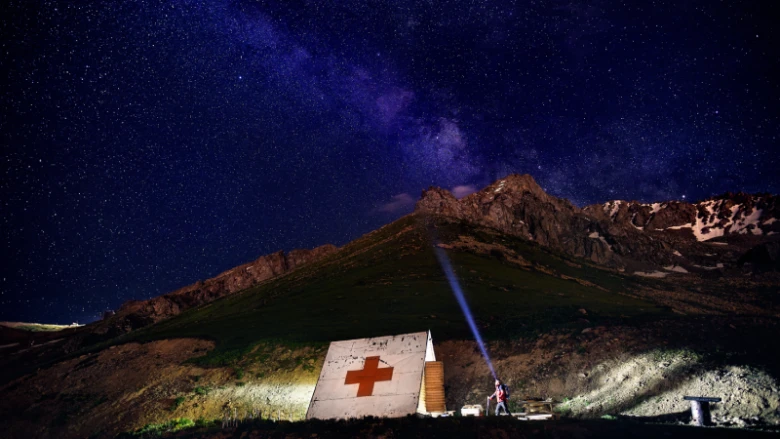Ladakh, with its high altitude, clear skies, and minimal light pollution, is one of the best places in the world for night sky photography. Whether you’re an astrophotography enthusiast or a beginner looking to capture the Milky Way, Ladakh offers unparalleled opportunities to photograph the stars. In this guide, we’ll walk you through everything you need to know about night sky photography in Ladakh in 2025, from the best locations to essential gear and techniques.
Why Ladakh is Perfect for Night Sky Photography
Ladakh’s unique geography and climate make it an ideal destination for astrophotography:
- High Altitude: At an average elevation of 3,500 meters, Ladakh offers clearer skies with less atmospheric distortion.
- Low Light Pollution: Remote locations like Pangong Lake and Nubra Valley have minimal artificial light, making the stars appear brighter.
- Clear Skies: Ladakh experiences over 300 sunny days a year, ensuring clear nights for stargazing.
Best Time for Night Sky Photography in Ladakh 2025
1. Summer (May to September)
- Why It’s Great: Pleasant weather and accessible roads make it the best time for night sky photography.
- Highlights: The Milky Way is visible during these months, especially from June to August.
2. Winter (November to February)
- Why It’s Great: The cold, crisp air enhances visibility, and the frozen landscapes add a unique element to your photos.
- Highlights: Capture star trails against snow-covered mountains.
Top Locations for Night Sky Photography in Ladakh
1. Pangong Lake
- Why It’s Great: The lake’s calm waters create stunning reflections of the night sky.
- Best Time to Shoot: During a new moon for the darkest skies.
2. Nubra Valley
- Why It’s Great: The sand dunes and distant mountains provide a dramatic foreground for astrophotography.
- Best Time to Shoot: Late at night when the skies are clearest.
3. Tso Moriri Lake
- Why It’s Great: Its remote location ensures minimal light pollution.
- Best Time to Shoot: Early morning before sunrise.
4. Hanle Village
- Why It’s Great: Home to the Indian Astronomical Observatory, Hanle is one of the darkest places in India.
- Best Time to Shoot: Any clear night, especially during the Milky Way season.
Essential Gear for Night Sky Photography
- Camera: A DSLR or mirrorless camera with manual controls.
- Lenses:
- Wide-angle lens (14-24mm) with a fast aperture (f/2.8 or lower).
- Prime lens (24mm f/1.4) for capturing more light.
- Tripod: A sturdy tripod is essential for long exposures.
- Remote Shutter Release: To avoid camera shake during long exposures.
- Headlamp: A red-light headlamp to preserve your night vision.
- Extra Batteries: Cold weather can drain batteries quickly.
Camera Settings for Night Sky Photography
1. Manual Mode
- Set your camera to manual mode to have full control over the settings.
2. Aperture
- Use the widest aperture (lowest f-number) to capture as much light as possible.
3. Shutter Speed
- Use the 500 Rule to avoid star trails: Divide 500 by your focal length to determine the maximum shutter speed.
- Example: For a 24mm lens, 500 ÷ 24 = 20 seconds.
4. ISO
- Start with an ISO of 1600-3200 and adjust based on the brightness of the stars.
5. Focus
- Set your lens to manual focus and focus on a bright star or distant light.
Techniques for Capturing Stunning Night Sky Photos
1. Milky Way Photography
- How to Do It: Shoot during the Milky Way season (June to August) and use a wide-angle lens.
- Pro Tip: Use a star tracker to capture sharper images of the Milky Way.
2. Star Trails
- How to Do It: Take multiple long-exposure shots (30 seconds each) and stack them using software like StarStaX.
- Pro Tip: Include a foreground element like a tree or mountain for added interest.
3. Light Painting
- How to Do It: Use a flashlight or LED light to illuminate a foreground object during a long exposure.
- Pro Tip: Experiment with different light sources and angles for creative effects.
Tips for Night Sky Photography in Ladakh
- Check the Weather: Clear skies are essential for night sky photography. Use apps like Clear Outside or Windy to check the forecast.
- Arrive Early: Scout your location during the day to find the best compositions.
- Dress Warmly: Ladakh’s nights can be extremely cold, especially in winter.
- Respect the Environment: Avoid leaving trash or disturbing wildlife.
Personal Experience: Capturing the Milky Way at Pangong Lake
During my last trip to Ladakh, I spent a night camping near Pangong Lake. As the sun set, the sky turned into a canvas of stars, and the Milky Way appeared in all its glory. I set up my tripod and used my 24mm f/1.4 lens to capture the scene. The reflections of the stars on the lake’s calm waters created a surreal effect. It was a magical experience and one of my most cherished photographs.
FAQs About Night Sky Photography in Ladakh
1. What is the best time to photograph the Milky Way in Ladakh?
The Milky Way is most visible from June to August.
2. Can I use a smartphone for night sky photography?
While smartphones have limitations, some high-end models with manual controls can capture decent night sky photos.
3. How do I avoid noise in my night sky photos?
- Use a lower ISO and longer exposure.
- Shoot in RAW format and reduce noise during post-processing.
4. Are there guided tours for night sky photography in Ladakh?
Yes, several tour operators offer astrophotography-focused tours in Ladakh.
Conclusion
Night sky photography in Ladakh is an unforgettable experience that allows you to capture the beauty of the cosmos. With the right gear, techniques, and locations, you can create stunning images of the stars, Milky Way, and more. Start planning your Ladakh astrophotography adventure for 2025 and get ready to capture the magic of the night sky.

